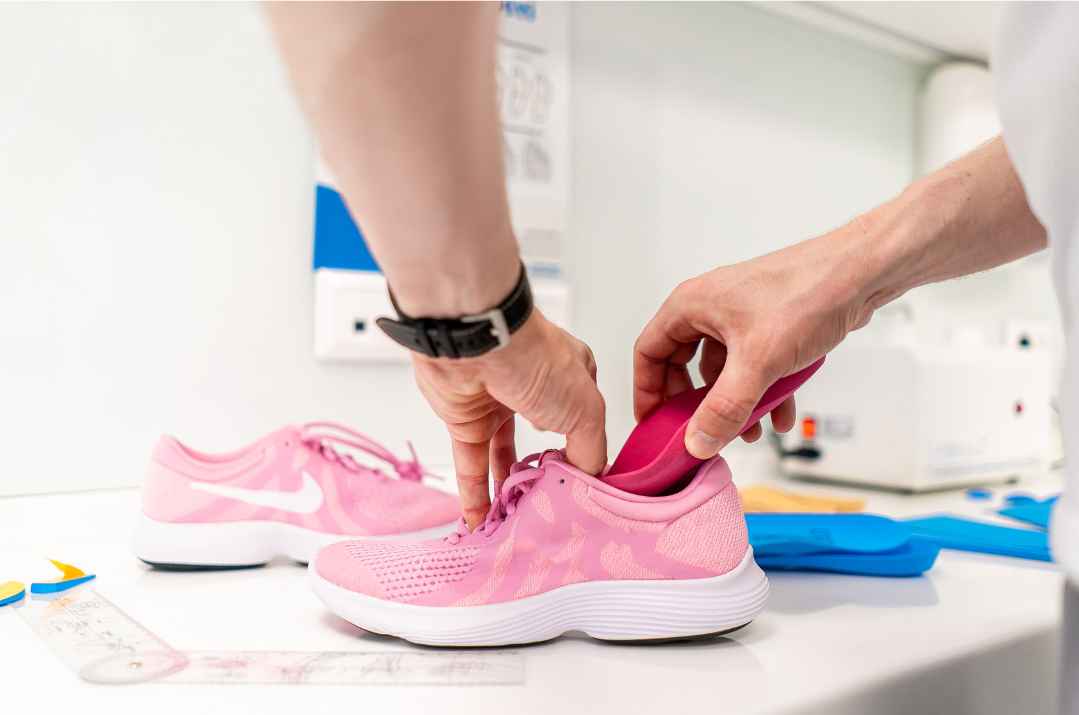Custom Foot Orthotics
Custom Foot Orthotics:
An orthotic refers to any device that can be inserted into a shoe, ranging from felt and gel pads to custom-made inserts that are designed specifically to correct an biomechanical dysfunction, abnormal walking pattern or a foot deformity. Orthotics often called arch supports, shoe inserts, and orthotics are very similar to eyeglasses, some people only require a low prescription you can purchase over the counter at the drug store, some people only need sunglasses purely for comfort, while others need a specialist to design a custom pair with their specific prescription. While glasses allow you to see properly, orthotics allow your foot and ankle to move properly as it holds your weight while you stand, walk, run, squat and jump. People often go for regular appointments to ensure that eyes are still functioning well over the years but they often neglect their feet until pain makes them aware. It may be time to have the mechanics of your feet, your main source or transportation, assessed to make sure you shouldn’t have a device to help your feet.

At Damen Optimal Health we have several professionals that can assist you in determining whether you need an any sort of orthotic device or not. The chiropractors are trained to assess the biomechanics of the lower limb and foot and determine what type of device if any at all is required. While the chiropractors can make the devices they normally refer to the resident foot specialist if a custom made device is required. Our Chiropodist has extensive training in the assessment of the foot and how it moves and is an expert in the proper prescription and design of orthotic devices.
Whether you need a good over the counter device, a mid range made-for-you device, or a prescribed custom made orthotic Damen Optimal Health Team will provide you with exactly what you need.
Links to Chiropody
When it comes to custom made devices they come in many shapes, sizes, and materials and fall into three main categories: those designed to change foot function, those that are primarily protective in nature, and those that combine functional control and protection.
Rigid Orthotics
Rigid orthotic devices are designed to control function and are used primarily for walking or dress shoes. They are often composed of a firm material, such as plastic or carbon fiber. Rigid orthotics are made from a mold after a chiropodist takes a plaster cast or other kind of image of the foot. Rigid orthotics control motion in the two major foot joints that lie directly below the ankle joint and may improve or eliminate strains, aches, and pains in the legs, thighs, and lower back.
Soft Orthotics
Soft orthotics are generally used to absorb shock, increase balance, and take pressure off uncomfortable or sore spots. They are usually effective for diabetic, arthritic, and deformed feet. Soft orthotics are typically made up of soft, cushioned materials so that they can be worn against the sole of the foot, extending from the heel past the ball of the foot, including the toes. These are often utilized by individuals who spend a lot of time standing at work especially those on cement surface. Like rigid orthotics, soft orthotics are also made from a mold after a chiropodist takes a plaster cast or other kind of image of the foot.
Semi-Rigid Orthotics
Semi-rigid orthotics provide foot balance for walking or participating in sports. The typical semi-rigid orthotic is made up of layers of soft material, reinforced with more rigid materials. Semi-rigid orthotics are often prescribed for children to treat flatfoot and in-toeing or out-toeing disorders. These orthotics are also used to help athletes mitigate pain while they train and compete.

